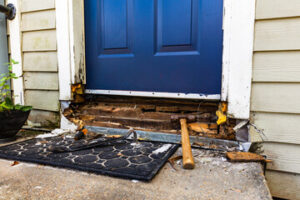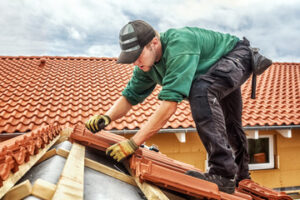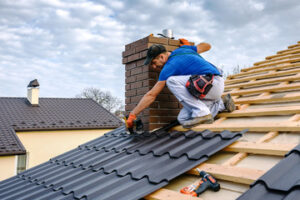Pros Foundation Repair Greensboro NC is more than just a money-saving investment; it’s also about your safety and the integrity of your home. But with so many different options on the table, how do you decide which approach to take?

Fortunately, there are a few key warning signs that can alert you to problems with your foundation. Read on to learn more about the most popular repair methods and how they work.
There are a few common signs of foundation damage that homeowners should look for, including horizontal cracks in the walls, crooked doors, uneven floors, and sagging. If any of these symptoms appear in your home, it’s important to seek foundation repair immediately to avoid further damage and potential structural instability.
Horizontal Cracks
Cracks running horizontally along a foundation wall are usually the most severe and indicate that the entire structure is at risk of failing. These cracks can be caused by soil pressure, shrinkage, or even a sudden loss of moisture within the soil.
If you notice these cracks in your walls, it’s crucial to contact a professional right away for an inspection and evaluation. Foundation professionals can determine the severity of the cracks and recommend a repair plan that could include anything from sealing and waterproofing to installing piers for more extensive support.
Vertical Cracks
Most of the time, vertical cracks in a foundation are not cause for concern. These thin, barely noticeable fissures typically result from normal settling and are a part of the curing process. However, if you notice that these cracks are widening over time, it’s best to call for a foundation evaluation.
Sinking Foundation
Foundation problems can cause the ground underneath your home or business to shift and sink. This can lead to a variety of issues, including pooling water in the crawl space or basement, musty odors, and pest infestations. To help prevent sinking, homeowners can improve drainage systems by directing gutters and downspouts away from the foundation and ensuring that soil moisture levels are balanced.
Sagging Foundation
If your home or business has a sagging foundation, it’s essential to have it evaluated and repaired as soon as possible. Not only can this compromise the stability of your home, but it can also lead to a number of other problems, such as uneven or sloping floors and sticking doors and windows.
While a little bit of sinking or sagging is completely normal, it’s important to have these problems addressed before they worsen. If left untreated, a sagging foundation can result in major structural issues that threaten the safety and integrity of your home or building. The most important thing to remember is that early detection and intervention can save you a lot of money in the long run.
Horizontal Cracks
Horizontal or jagged diagonal cracks in foundation walls are a major red flag that your home’s structural integrity is being threatened. They indicate that the foundation is under significant stress or pressure, which can lead to a variety of other serious problems, such as water infiltration and damage to personal belongings stored in basements and crawl spaces.
Typically, horizontal cracks are the result of hydrostatic pressure that builds up against foundation walls over time. This pressure is exacerbated when there is poor drainage around your home, as the soil doesn’t adequately drain away.
Other causes of horizontal cracks include freeze-thaw cycles, soil settlement, and differential movement between sections of your foundation. These issues can cause the foundation to shift in different directions, which can result in a bowing wall. If you see horizontal cracks in your foundation wall, contact a professional to assess the severity of the issue and recommend the best course of action for repair.
It’s also important to remember that while hairline cracks may not be a concern, they could widen quickly if left untreated. If a crack is wider than 1/10 of an inch, particularly near doorways, windows, floors, or below I-beams, it’s a sign of a more serious problem and needs immediate attention.
In addition to indicating serious structural problems, horizontal cracks can also detract from your home’s value and make it more difficult to sell in the future. In the event you do decide to put your house on the market, addressing these issues early with a professional can help keep the cost of repairs low and prevent further damage to your home’s structural integrity. In addition, hiring a professional can save you the hassle of tackling these repairs on your own and ensure that the job is done correctly to avoid further complications down the road.
Doors That Don’t Close Properly
Sticking or jamming windows and doors can be an early sign of foundation damage. When a door or window becomes difficult to open and close, it may be because the frame has shifted out of alignment due to soil settlement or sinking of the foundation. When this happens, the door and window will need to be re-screwed, re-hung or replaced in order to align with their frames properly.
In some cases, a little bit of sanding, adjusting or cleaning will allow the door or window to function normally again. However, if these simple methods are not effective, it’s likely that the issue is more serious than just a swollen door or loose screws. In some instances, the problem is caused by a hidden water leak in the foundation. These leaks can cause the wood in the door or frame to swell, leading to misalignment and making it hard to open or close.
If you notice that your utility bills are starting to go up without any explanation, this could be a sign that your foundation is leaking. This is because leaks in the foundation can lead to a rise in your water usage, which in turn will result in higher utility bills. Having your foundation inspected and repaired by a professional will help prevent this from happening.
When you’re getting ready to sell your home, it’s always a good idea to keep an eye out for these signs of a faulty foundation. It’s easy to ignore small issues, but these problems can eventually get worse and lead to more expensive repairs down the road.
While cracks are the most obvious telltale sign of a faulty foundation, doors that don’t close correctly or have uneven gaps at the top can also indicate that the foundation has shifted and settled. Likewise, floors that are uneven or dip in certain areas can be a sign of shifting soils, failing crawl space supports or moisture problems in the basement. Addressing these problems early can save homeowners a lot of money and hassle down the road. If you’re looking for a company to perform professional foundation repair, Gerrior Masonry & Landscaping is here to help.
Uneven Floors
Uneven floors are a common problem that can be caused by many things, including subfloor issues and normal settling of a home. However, if the unevenness of the floor is noticeable and accompanied by other issues like cracks in the drywall, sticking doors or windows, or bowing or leaning walls, it could indicate that there is a structural problem with your foundation.
Uneven flooring is a sign of underlying issues with your foundation, as the problems that cause an uneven floor can also impact the floors above it. The most common reason for uneven floors is that elements of the foundation shift, sink or weaken over time, which then affects the floors above them. This can happen due to a number of factors, such as soil compaction, excessive moisture and even natural settling of the house over time.
During construction, builders typically compact the soil under the foundation of a house or building, which helps to prevent it from shifting in future years. However, if this soil is compacted too much or not enough, it can lead to an imbalance in the foundation, which will then directly affect the floors above it. In addition, if water damage causes the soil to shrink or erode, it can also create an imbalance in the foundation, which will affect the floors above.
Moisture can also contribute to uneven floors, as it can cause wooden beams and sub-flooring to warp over time. This can occur from a leaky pipe hidden within a wall or groundwater that pools around or beneath the foundation of a house. Moisture may also be a result of poor drainage, which can also cause the foundation to move and thereby affect the floors above.
In the case of uneven floors, it is important to contact a professional immediately to identify the root cause and recommend a course of action to repair the issue. For instance, if the unevenness is caused by a faulty subfloor or joists, an experienced contractor can replace or reinforce them using specialized methods that don’t require you to leave your home while they are working. In the event that the unevenness is caused by a sloping or shifting of the foundation itself, this can usually be repaired using push or helical piers that are drilled into the soil to lift and stabilize the foundation, which will then level the floors above it.



